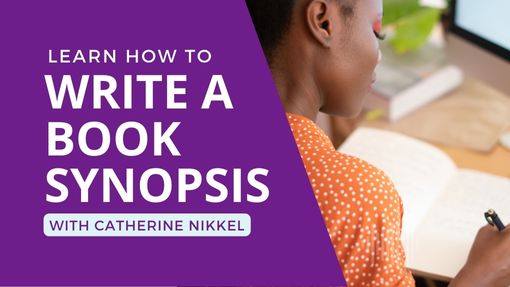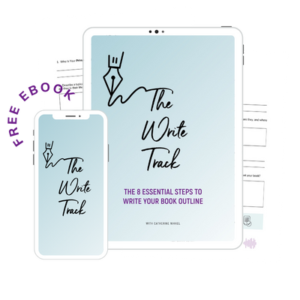In the world of writing and publishing, knowing how to write a book synopsis is a vital skill. It’s much more than just a synopsis that includes a simple short description of your novel; it’s a comprehensive overview that offers a glimpse into your storytelling skills and the compelling narrative arc you’ve created.
A book synopsis is a short overview of your entire novel. It represents the essence of the entire book, including the central conflict, the main characters, and how the plot unfolds. Unlike a teaser or book blurb, a book synopsis fully explores your plot points, including revealing any plot twists and the ending.
When writing a query letter or book synopsis, it’s essential to convey the narrative distance effectively, using third person, present tense narrative. This provides the reader, often a potential literary agent or publisher, a snapshot of the novel’s major themes and motivations.
The Importance of a Novel Synopsis
The importance of a compelling synopsis cannot be overstated. The synopsis is often the first point of contact between the author and potential agents or publishers. Here, the literary agent will envision the scope of your narrative and decide whether they want to read your entire manuscript.
It’s important to remember that the synopsis is not just a dry plot summary. It is a valuable tool that should showcase your ability to craft a satisfying ending and how effectively your protagonist succeeds in resolving the central conflict. The character names, their development – or character arcs, and how they drive the story forward should be clearly evident.
It’s also critical to adhere to submission guidelines, including the word count. Most professional synopses are one to two single-spaced pages, although it may vary depending on the agent’s preferences. Writing a synopsis that fits within these parameters while effectively summarizing your entire novel on one page can be challenging. But don’t worry; we’re here to help guide you through the process.
In the following sections, we will discuss the steps involved in writing a successful novel synopsis, from introducing the main characters and major plot points to wrapping up the narrative arc with a conclusion that leaves a lasting impression. By understanding and applying these principles, you’ll be well on your way to crafting a successful novel synopsis. So, let’s get started.
The Structure of a Book Synopsis
Beginning Your Synopsis
The beginning of your synopsis should introduce your main characters, the setting, and the inciting incident. These elements kick off your narrative arc and draw your reader into the story. When presenting your characters, please focus on the key details that make them unique and integral to the story. Describe the inciting incident that sets the plot in motion and challenges the status quo of your characters’ lives.
Detailing the Plot
In the first paragraph of your synopsis, detail how the events unfold and how they affect your main characters. Keep your focus on major plot points that drive the story forward and showcase your main character’s development. All crucial plot twists should be revealed in your synopsis. However, be careful not to get lost in overly complicated plot details; maintain a clear narrative line.
Showcasing the Climax and Resolution
The climax, the plot point where the tension and conflict reach their peak, should be clearly highlighted. This is where your main characters confront their challenges most directly. Following this, outline the following points of resolution or the fallout of the climax, illustrating how your characters have changed and what they’ve learned.
Your synopsis should demonstrate a clear narrative arc, from introducing characters and conflicts through rising tension to the climax and resolution. This will help the literary agent or other reader understand how your story pieces together and flows.
Maintaining a Professional Tone
In synopsis writing, it’s crucial to maintain professionalism. Ensure your synopsis writing is free of typos, grammatical errors, and run-on sentences. Correct grammar and precise language increase readability and reflect your dedication and seriousness as a writer.
When presenting plot twists or surprising events, ensure they make sense within the context of your story. Your goal is to convince the agent that these plot elements are integral parts of a cohesive and compelling narrative.
Remember, the novel synopsis is not just a requirement for your submission package; it’s an opportunity to showcase your storytelling abilities. Use it to persuade literary agents that your manuscript is worth their time. With these points in mind, let’s move on to the specifics of how to write a novel synopsis.
The Details of Writing a Book Synopsis
Word Count and Page Count
The typical length for a novel synopsis varies. Still, it should ideally fit into a few pages, one to two single-spaced or two to three double-spaced pages. This roughly one-page synopsis translates to 500 to 800 words. Following submission guidelines from literary agents or publishers is essential as it demonstrates your professionalism and respect for their time.
Point of View and Tense
Write your synopsis in the third person, even if your novel is written in the first person. This maintains a necessary distance from the characters, and the narrative distance allows you to discuss plot points objectively. Also, use the present tense. This keeps the plot points immediate and active, creating a sense of urgency and making the synopsis more engaging.
Naming Your Characters
When you first introduce your characters, use their full names. After that, refer to them by their last names. This makes it easier for the reader to keep track of who’s who, especially in a story with many characters. Be sure to mention the motivations and goals of your main characters, as they are integral to understanding the plot.
Including Key Elements
When you write a novel synopsis, ensure it includes all your story’s key elements. The setting, main characters, major themes, and central conflict should all be clearly outlined. Additionally, your synopsis should detail the plot’s major turning points, including the inciting incident, key conflicts, climax, and resolution.
Handling Plot Twists
While you may be hesitant to reveal your plot twists in the synopsis or query letter, they’re vital to include. Plot twists demonstrate your creativity as a writer and show potential agents and publishers how your story is unique. That said, ensure that plot twists are incorporated logically and don’t appear out of nowhere.
Concluding Your Synopsis
End your synopsis on a strong note by summarizing the resolution and how the main characters have changed by the end of the third person of the book. Suppose your book is part of a series. In that case, your synopsis longer indicates potential for future stories but ensures the presented novel has a satisfying ending.
A well-written book synopsis can open doors to the literary world. Take the time to craft a synopsis that does justice to your novel, and remember, it’s not just a summary – it’s a marketing tool. Following these guidelines, you can create a compelling synopsis that will entice literary agents and publishers to read your entire manuscript.
Crafting a Compelling Synopsis
Showcasing Your Unique Voice
Even though a synopsis is a technical document, it should still reflect your writing style and voice. This can be a difficult balance to strike. You want to ensure that your narrative arc and character motivations are clear. Still, you also need to engage your reader. After all, literary agents and publishers are not just looking for a great plot but great writers.
Addressing Subplots
If your novel contains subplots crucial to the main plot twist storyline, they should also be included in the synopsis. However, they should be presented to support the main plot. Remember to focus on the main narrative arc and mention the subplots only as they interact with or influence the main plot.
Writing for Different Genres
The style and focus of your synopsis may slightly differ depending on the genre of your novel. For instance, a synopsis for a science fiction novel would include world-building and plot details first. Suppose you are writing a synopsis for a young adult novel. In that case, the emphasis should be on how your protagonist navigates their personal and societal challenges.
Common Pitfalls to Avoid
Avoid writing a synopsis that is too detailed. The goal is to provide a clear overview of the next plot point, not to catalog every single event. Stay focused on the main narrative arc and only mention events that move the clear story arc forward.
Also, resist the temptation to tease or pose unanswered questions in your synopsis. Unlike a book blurb, which aims only as a teaser or to entice a reader to pick up the book, a synopsis should provide a complete overview of your plot, including the ending.
Finalizing Your Synopsis
After you’ve written your synopsis, review it for correct grammar and run-on sentences. A well-written synopsis should be free of grammatical errors and be easy to read. Be mindful of the word count and ensure that your synopsis fits within the industry standards or submission guidelines provided.
Remember, writing a synopsis is a process. You’ll likely write a synopsis in several drafts before landing on a version you’re satisfied with. Your synopsis is a valuable tool in getting your novel read by literary agents and, ultimately, getting it published. Don’t rush it. Take your time and write a synopsis that showcases your novel in the best possible light.
Synopsis Examples and Further Considerations
Example: Jane Austen’s Pride and Prejudice
To help you understand how to write a compelling synopsis, let’s look at how one might be crafted for a well-known literary science fiction novel alone. Here’s a short example for Jane Austen’s Pride and Prejudice:
“In early 19th-century England, the five Bennet sisters, including the intelligent Elizabeth and the beautiful Jane, navigate societal pressures and expectations. The arrival of the wealthy Mr. Bingley and his friend Mr. Darcy stir romantic hopes and tensions. Despite initial misunderstandings and obstacles, including their own pride and prejudice, Elizabeth and Darcy navigate their complex feelings for each other. Their journey culminates in mutual understanding, respect, and love, offering a critique of societal norms of the period.”
The Importance of a Good Synopsis
When your synopsis is complete, it should offer a concise summary of your book, covering major plot points, character arcs, themes, and conflicts. It should show how your plot unfolds and how your characters develop. The synopsis’s more straightforward primary goal is to show potential agents and publishers that your novel has a clear, engaging story arc, intriguing characters, and a satisfying resolution.
The Place of a Synopsis in the Literary World
Remember, a synopsis is not just a formality or an arbitrary industry standard. It’s your chance to demonstrate your ability to craft a compelling story, showcase your unique voice, and prove your understanding of narrative structure. A good synopsis can distinguish between a manuscript request and a rejection letter.
A well-crafted synopsis in the serious literary fiction world is a sign of a professional writer who understands their story and the industry. It’s often the first opportunity to show that you can write well, tell a compelling story, and do it all within just a few pages of confined space, with word count restrictions.
Final Words
In the end, the most important tip on how to write a book synopsis is simply this: practice. Like all writing, it’s a skill that gets better with time. So, keep refining, keep polishing, and remember to view your synopsis as an opportunity rather than a chore. It’s your chance to introduce your novel to the world – so make it count!

Email: catherine@catherinenikkel.com
Resources
Have you downloaded your Free Book Outline yet? It is the same outline I use when ghostwriting books and with my book coaching clients.
Need help telling your story in your own voice? Let’s make it happen. Schedule a consultation with me here
What type of Content Creator are you? Take the Quiz! – 4 different types of creators, which one are you?





